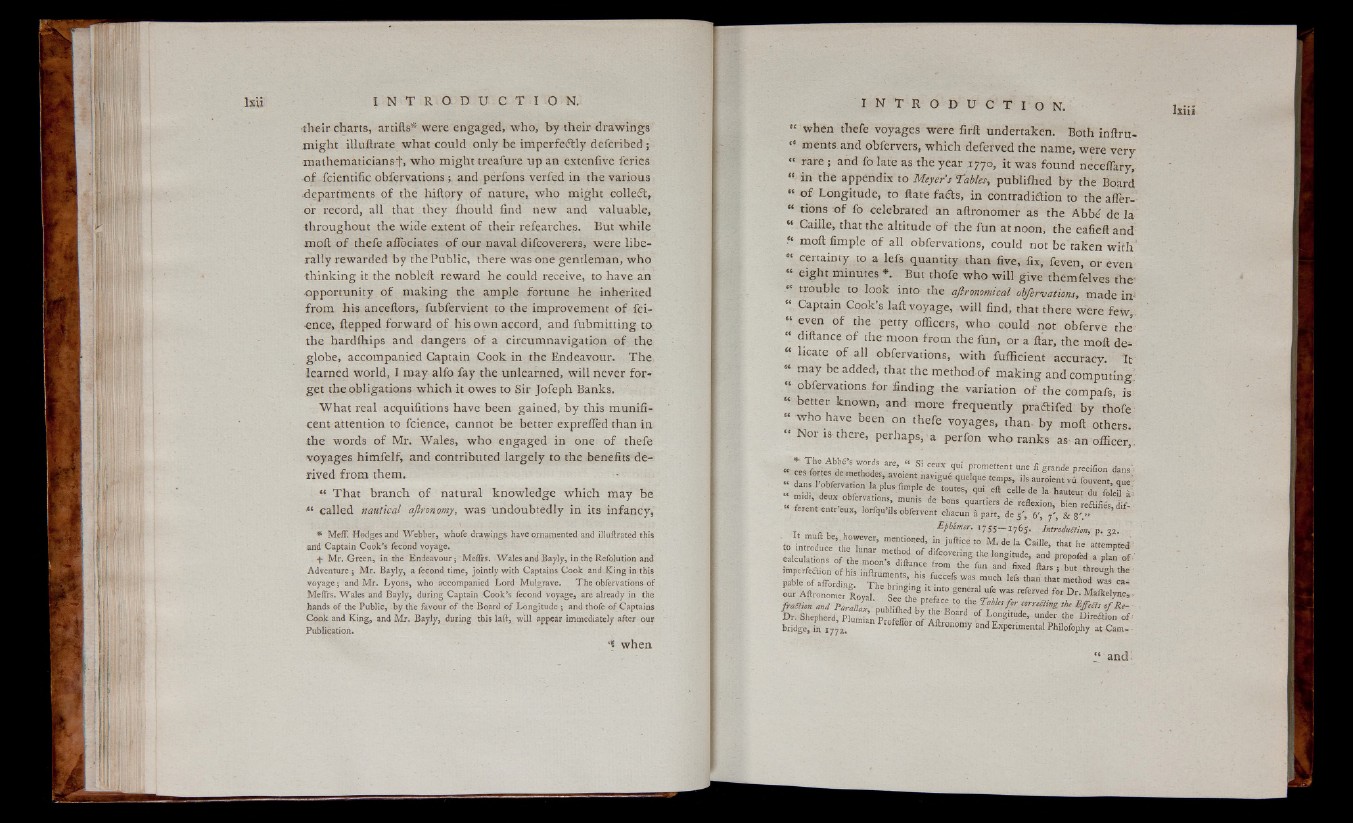
their charts, ardfts* were engaged, who, by their drawings
might illuftrate what could only be imperfectly defcribed;
mathematiciansf, who might treafure up an extenfive feries
o f fcientific obfervations -, and perfons verfed in the various
.departments of the hiftory of nature, who might colleCt,
or record, all that they ihould find new and valuable,
throughout the wide extent of their refearches. But while
moft of thefe afiociates o f our naval difcoverers, were liberally
rewarded by the Public, there was one gentleman, who
thinking it the nobleft reward he could receive, to have an
opportunity of making the ample fortune he inherited
from his anceflors, fubfervient to the improvement o f fci-
ence, itepped forward of his own accord, and fubmitting to
the hardihips and dangers of a circumnavigation of the
globe, accompanied Captain Cook in the Endeavour. The
learned world, I may alfo fay the unlearned, will never forget
the obligations which it owes to Sir Jofeph Banks.
What real acquifitions have been gained, by this munificent
attention to fcience, cannot be better exprefled than in
the words of Mr. Wales, who engaged in one of thefe
voyages himfelf, and contributed largely to the benefits derived
from them.
“ That branch o f natural knowledge which may be
“ called nautical aftronomy, was undoubtedly in its infancy,
* MelT. Hodges and Webber, whofe drawings have ornamented and illuftrated this
and Captain Cook’ s fecond voyage.
f Mr. Green, in the Endeavour; Meflrs. Wales and Bayly, in the Refolution and
Adventure; Mr. Bayly, a fecond time, jointly with Captains Cook and King in this
voyage; and Mr. Lyons, who accompanied Lord Mulgrave. The obfervations of
Meflrs. Wales and Bayly, during Captain Cook’s fecond Voyage, are already in the
hands of the Public, -by the favour of the Board of Longitude ; and thofe of Captains
Cook and King, and Mr. Bayly, during this laft, will appear immediately after our
Publication.
when
K when thefe voyages were firft undertaken. Both inftru-
“ ments and obfervers, which deferved the name, were very
» rare ; and fo late as the year 1770, it was found neceifary,
“ in the appendix to Meyers Tables, publiihed by the Board
“ ° f Longitude, to ftate fadfs, in contradiaion to the afler-
“ tions of fo celebrated an aftronomer as the Abbé de la
u Caille, that the altitude of the fun at noon, the eafieft and
moft fimple of all obfervations, could not be taken with
certainty to a lefs quantity than five, fix, feven, or even
“ eight minutes *. But thofe who will give themfelves the-
trouble to look into the agronomical obfervations, made in
“ Captain Cook’s laft voyage, will find, that there were few ,,
|j even of the petty officers, who could not obferve the*
“ diftance of the moon from the fun, or a ftar, the moft de-
“ licate of all obfervations, with fufficient accuracy. It
« may be added-, that the method o f making and computing.
« obfervations for finding the variation o f the compafs, is
“ better known, and more frequently pradlifed by thofe
« who have been on thefe voyages, than- by moft others.
“ Nor is there, perhaps, a perfon who ranks as an officer,.
« * Wi ü 2 are’ “ Si ceu* Svï promettent une ff grande precifion
" S '7 . '“ dC » M | navigué quelque temps, ils Î Æ Æ B é H
« dansl ob rervatjonlaplua^plede toutes, qui eit celle de la hauieur du fdeil à -
midi deux obfervations, munis de bons quartiers de reflexion, bien reflifiés different
entr’éux, lorfqu’ils obfervent chacun à part, de 5', 6', f , & g'.»
Ti j l S Eybfm r. 1755- 1765. Introdullim, p. 3* . . - '
to i n t Z 1‘DT eVer, n,eMioTOd’ in jnfticéto M , de la Caille, that he attempted
m roduce the lunar method o f difcovering the longitude, and propofed a plan of.
°ridgtTnTjrUmian Fr0fdr°r 0f Aftronom>’
" and^